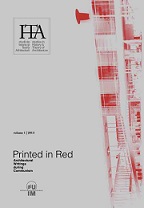“Taste Must Arise from the Doctrine”. Architecture in the Hungarian Cultural Media in the 1960s
“Taste Must Arise from the Doctrine”. Architecture in the Hungarian Cultural Media in the 1960s
Author(s): Mariann SimonSubject(s): Architecture
Published by: Universitatea de Arhitectură şi Urbanism »Ion Mincu«
Keywords: modern architecture; socialist lifestyle; ideology; artistic value; cultural media; 1960s
Summary/Abstract: The conscious, politically driven consolidation of the socialist regime after the failed revolution of 1956 resulted in an optimistic period of the long Kádár-era: the sixties was the decade of thaw, breathing more freely, new chances, more freedom and raising living standard. Architecture was also touched by the reorganisation of the political and economic system. In the first part of the 1950s Hungarian architecture – similarly to the whole socialist camp – was characterised by a state-required traditionalism. Politics used architecture for representing socialist ideology and power, but in return architecture was regarded as an art. Architects celebrated the regaining of modern architecture, but they did not want to give up their position in the world of art, or their role as the doctor of the (socialist) society. To develop the intended image architects turned to the cultural media. The first part of the essay examines how professionals – theoreticians, scholars and leading experts – tried to popularize modern, technology-based architecture, to prove its relevance in socialism and explain its artistic beauty. The second part considers the other party: how did the lay intellectuals who mainly represented the area of humanities expressed their expectations concerning the social role of architecture.
Journal: sITA – studii de Istoria şi Teoria Arhitecturii
- Issue Year: 2013
- Issue No: 1
- Page Range: 30-44
- Page Count: 15
- Language: English

